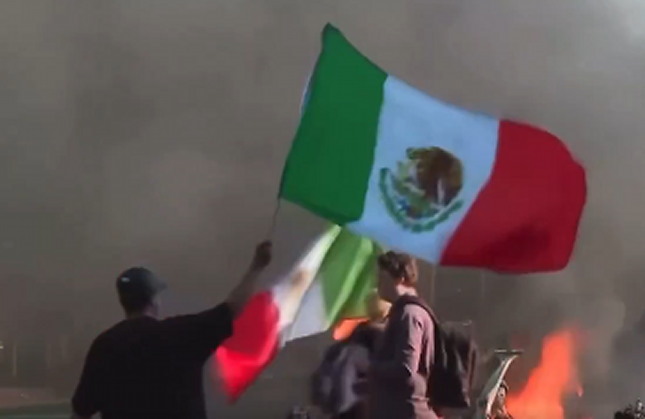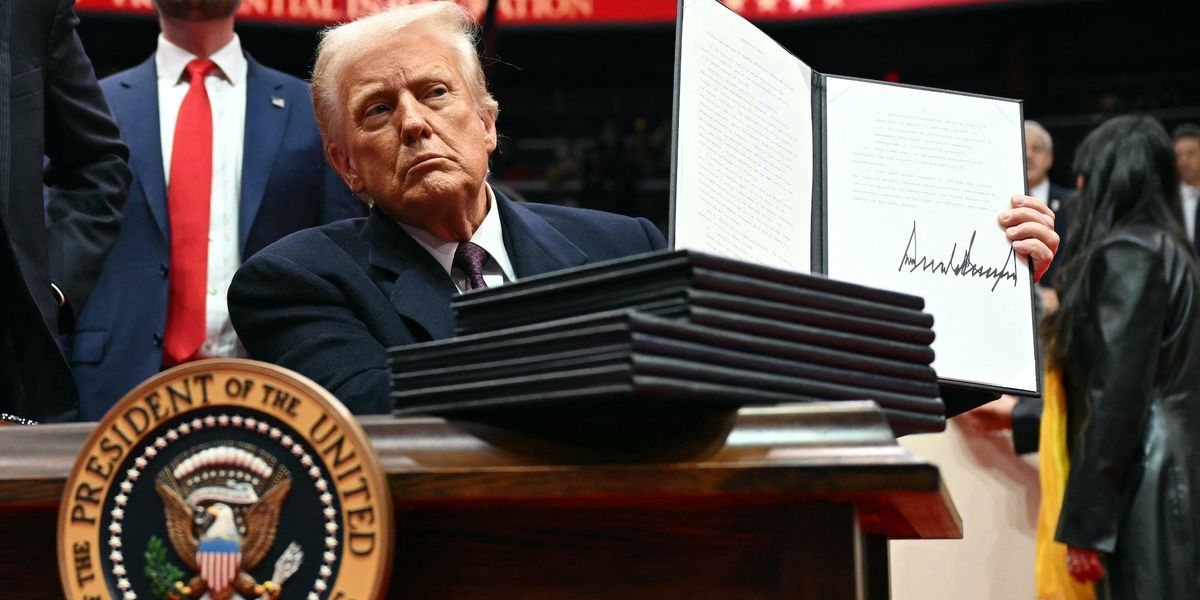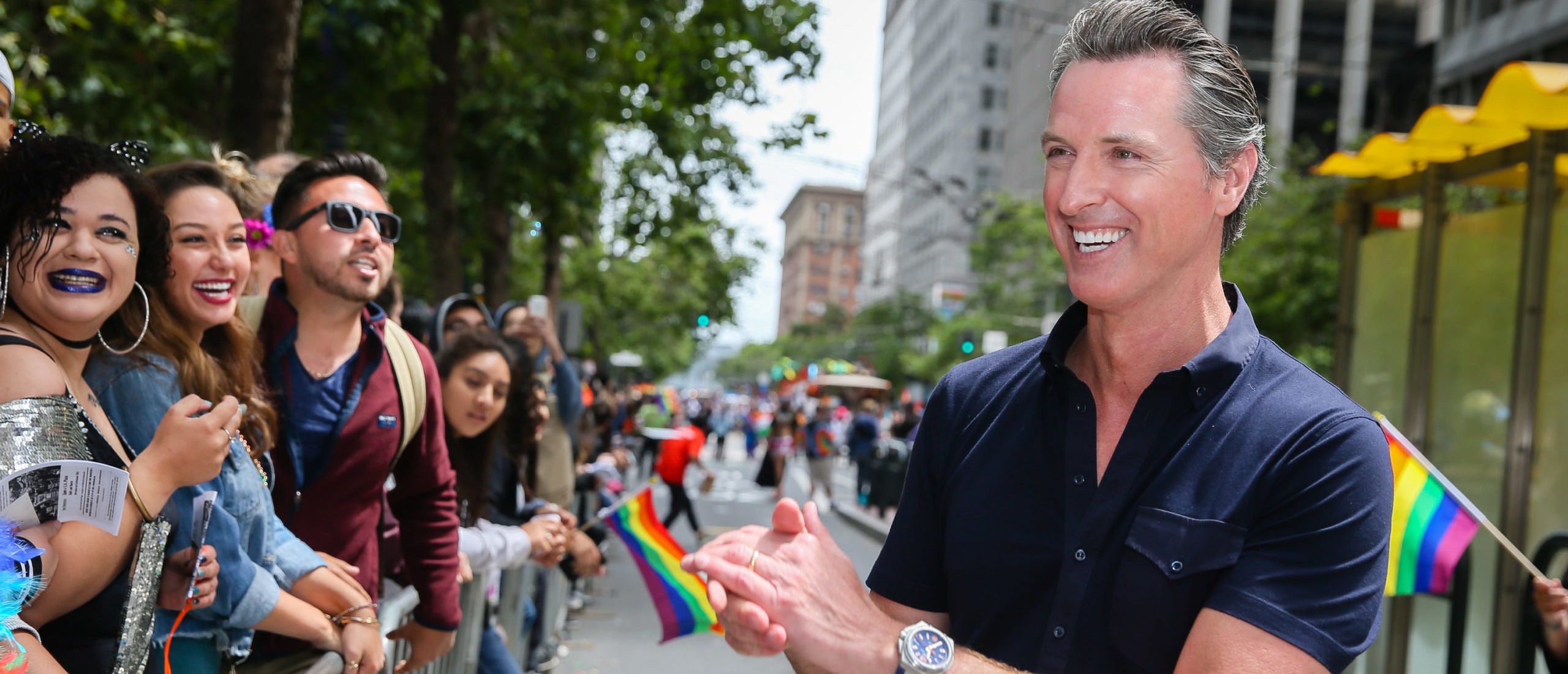The recent unrest in Los Angeles has sparked a wave of controversy, with foreign flags taking center stage. The absence of the American flag, except when treated with disdain, has caught the public eye. Instead, Mexican, Palestinian, and even Communist flags have been prominently displayed, fueling a heated debate.
Organizers of the protests have now started handing out American flags. This attempt to reshape their image comes after footage revealed the dominance of foreign flags amid the chaos. However, many believe it’s too late to change public perception.
The symbolism of waving a Mexican flag while protesting deportation by the U.S. government has left many puzzled. Critics question whether the protesters genuinely appreciate the country they reside in. The mixed signals sent by these actions have sparked a national conversation.
Prominent voices on social media have expressed skepticism about the effectiveness of distributing American flags. Some argue that the damage to their cause has already been done. The foreign flags have become emblematic of the protests, overshadowing any new gestures.
Conservative commentator Aldo Buttazzoni noted the recent shift in tactics by protest organizers. His observations highlight the stark contrast between the initial protests and the current attempts to alter their image. Despite these efforts, skepticism remains high.
Ian Haworth, another conservative voice, questioned the logic behind waving Mexican flags amid acts of destruction. His comments reflect a broader sentiment of confusion and disbelief. Such actions have been perceived as contradictory to the protesters’ purported goals.
The presence of foreign flags has stirred emotions and opinions across the nation. Some see it as an affront to American values and identity. The choice to fly these flags during such volatile times has intensified the debate over national allegiance.
Stephen Miller, a former advisor to President Trump, was humorously speculated to have orchestrated the flag-waving campaign. Social media users have drawn comparisons, highlighting the irony of the situation. The juxtaposition of foreign flags and civil unrest has created a striking image.
Frank McCormick’s comments further underscore the tension surrounding the use of foreign symbols. He questions the appropriateness of wearing American symbols abroad while allowing foreign flags at home. This duality has fueled further discussion on national pride.
George Alexopoulos took to social media to label the destruction of an American city while waving foreign flags as a potential act of war. His perspective resonates with those who view these actions as a direct challenge to American sovereignty. The symbolism is not lost on observers.
Kevin Dalton highlighted the irony of anti-ICE protesters waving the flag of the country they resist being deported to. This visual contradiction has become a talking point among conservatives. The image of flags flying amid protests paints a complex picture.
The New York Times, known for its liberal leanings, acknowledged the prominence of the Mexican flag in the riots. Their coverage has added another layer to the public discourse. The symbolism of the Mexican flag has evolved, becoming a contentious topic.
Some conservatives argue that the treatment of the American flag is a clear sign of anti-American sentiment. Acts of spitting on and burning the flag have not gone unnoticed. These actions are seen as a blatant display of disrespect for the nation.
The shift to American flags is viewed by many as an insincere attempt to mend their image. Critics assert that the protesters have already revealed their true colors. The damage to their credibility is perceived as irreversible.
As the protests continue, the presence of foreign flags remains a focal point. This choice has overshadowed other aspects of the demonstrations. The optics of the situation have created lasting impressions.
Clay Travis posed a question about other countries allowing such displays of foreign symbols amid unrest. His inquiry reflects a broader concern about national identity and sovereignty. The issue has sparked debates about immigration and loyalty.
The pride associated with foreign flags during the protests has been met with mixed reactions. Some see it as an act of defiance, while others view it as disrespectful. The symbolism of these flags has taken on a life of its own.
Seth Dillon’s comments on the treatment of the American flag highlight the perceived anti-America sentiment. His remarks capture the frustration of those who feel their national identity is under attack. The symbolic destruction of the flag has resonated deeply.
In conclusion, the protests in Los Angeles have ignited a fierce debate about national identity. The use of foreign flags has become a defining feature of the unrest. The efforts to change this perception may be too little, too late.




To late it already shows how stupid these people really are some leader of the clan got his ass kicked for displaying foreign flags they were told quickly to switch to American flags what a phony excuse of riots that the people have no idea what they’re protesting about it’s just a money maker to them and a time to destroy things and steal what ever they can get their hands on. Good try democrats your phony protest is only causing your own cities to get burned down and costing your state to pay for your own self inflicted damages no federal money at all. Bunch of useless leaders and hypocrites.
Hope the whole state burns to the ground would serve the democrats right.
Lying Marxists.